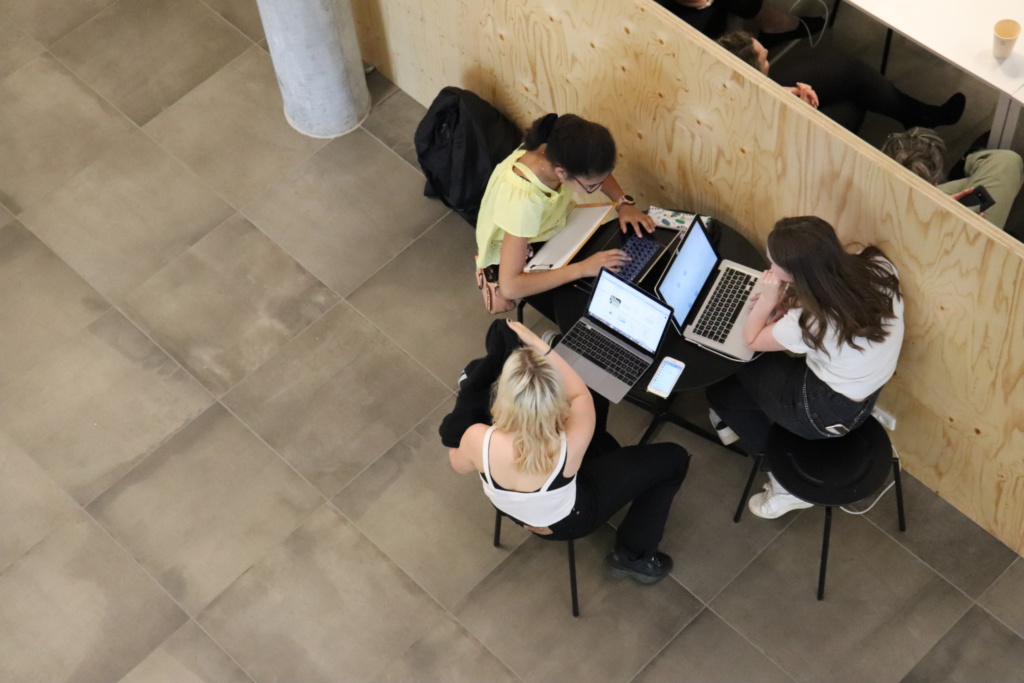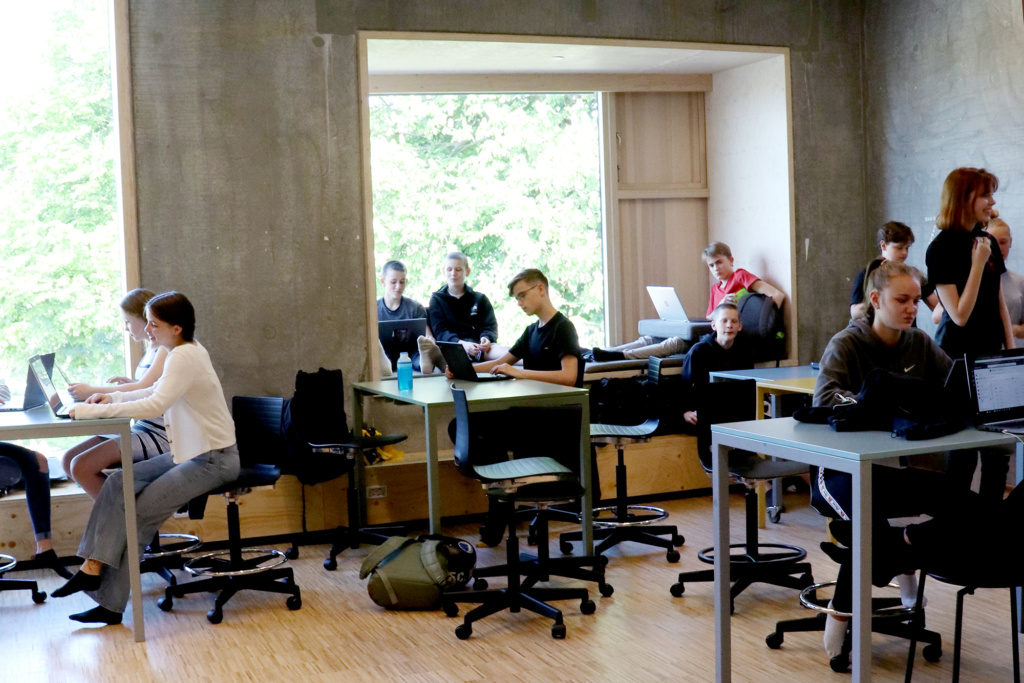
“When we have the final exams the children use the round tables—it signals that we are all in this together,” says deputy headteacher Kim Rasmussen, perhaps summing up the overarching culture of learning at Katrinedals Skole in Copenhagen.
While other schools may have sat students in rows facing the front, cut off from their friends, the 950-pupil grundskole is not afraid to do things differently.
Rasmussen and Headteacher Rikke Schultz explain with passion how, when planning the new building to house their lower-secondary section, encouraging well-being, friendships and social interactions took centre stage. This, they believe, is the key to getting great academic results too.
The building, home to teenagers in Years 7 to 9 (aged 13 to 15), has been built across two floors. It incorporates classrooms that are of traditional shape and size externally (60m2) but include an internal bay and side benching to create more seating choices for students. These classrooms open on to a large shared space where, during lessons, individual students or groups can work in a variety of ways, choosing from comfy sofas, cosy booths or bigger “huts” furnished with tables and chairs. There are even small “fairy ring” structures to encourage relaxed collaborative working at floor level, S-shaped “love seats” and an oval space with high wooden walls for “secret” meetings and film-viewing.
Display of students’ work is also valued, encouraging a sense of ownership of the space and celebrating newly-learned skills. A number of cabinets containing stuffed animals and skulls in glass cases give a flavour of an old-fashioned museum, while “found” items such as broken pottery are on display behind clear glass in the floor.
A central point of the shared space is an open wooden staircase which allows staff to bring students together but also provides a space for students to gather to work in groups. This contrasts with the more traditional design of a closed school hall, closed unless students seek permission first.

Each year group has its own area, although mingling is encouraged and friendships are made across year groups in this way. Pupils describe competition for the best workspaces between year groups as “friendly feuds”. These physical arrangements support a year-group structure designed with friendships in mind. Each year of 100 pupils is divided into six tutor groups and they have the same tutor for three years.
But when it comes to subject lessons, the classes are re-arranged every four months. Rasmussen says: “We do this six times over the three years so they don’t consider themselves as belonging to a class but belonging to a year.” Students, he says, will regularly experience different teachers, all with different styles. This, he says, maximises the chances of a pupils being taught, at least some of the time, by a teacher with a style that suits them.